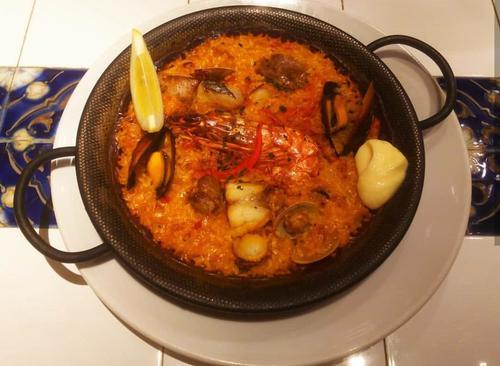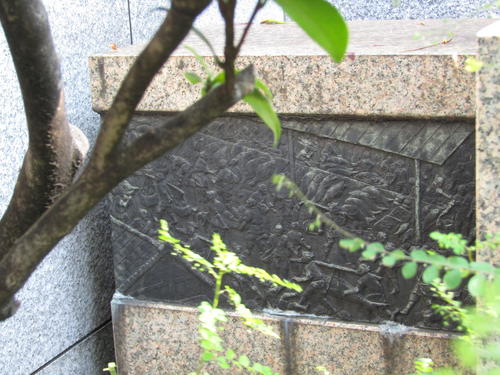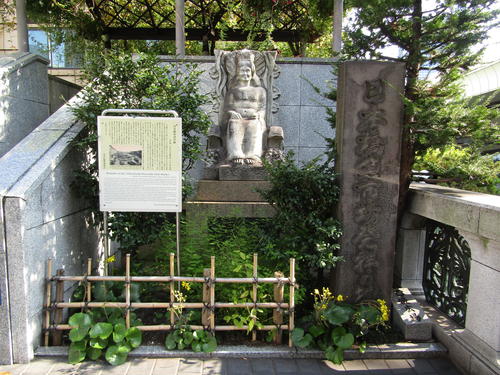Hello. This is a new correspondent, Hanes.![]()
![]()
The other day, in "Chuo-ku x Spain (1)-Food and Architecture-", I mentioned the relationship with Spain found in Chuo-ku.
This time, I would like to introduce the exchange with Spanish people about 400 years ago.
The time is the night of September 30, old calendar, Keicho 4 (1609).
The Spanish ship San Francisco, which was heading from Manila, Philippines to Mexico, was distressed at Tajirihama, Iwawada-mura, Kazusa (now Onjuku-cho, Chiba Prefecture)....![]()
The ship had 373 passengers, including the Spanish Don Rodrigo (Philippines' Temporary Secretary-General of the Philippine and the Countess of the later Deputy King Nueba España).
When Edo shogunate learned about it, 317 out of 373 people survived!
Before leaving Uraga to Mexico, Rodrigo stops at Otaki, Edo, Sunpu, Kyoto, Bungo (Oita Prefecture), Usuki, etc.
The secretary Manuel de Mora wrote down the sights and interactions with Ieyasu on the way, and
I submitted a report to the King of Spain Ferlipe as a report![]()
The report contains detailed Japanese customs, etc., and is a valuable resource that shows the appearance of Japan about 400 years ago.
When you read "Don Rodrigo's Japan Observations 400 Years ago by Spanish" which is easy for children to read, you can read.
There was an interesting description, so this time I would like to introduce some of them from the book.
■Was it unexpectedly similar? Japanese and Spanish customs
[Thanks and Greetings] (p. 18)
"The lord of Otaki had a wonderful reception like a courtesy of the court of the city of Madrid, the capital of Ispania."
"I came out to pick up the Lord, but when he saw me, he stopped and saluteed with his hands and head in the same way as Spain. And the Lord kissed me with my hand."
[Seat] (pp. 18-19)
「(...The Lord and I gave each other for a while, asking which one should arrive at the upper seat. Among the people of Ispania, the right side is the upper seat, but in Japan, the person who is the sword on the left side is the upper seat. That's because it's better to put the opponent on the right side to pull out the sword and cut it off. On the left side, there is a close person to trust. The Lord forcibly recommends me to the upper seat on the left."
It seems that both countries had similar bows and humility of giving up senior seats.
It was an unexpected discovery that was not expected only in Japan at the time when there were still few exchanges with overseas.![]()
■Otaki Castle (p. 19)
"Between the first and second gates, there are bunkers, vegetable gardens, Inada, and gardens, and even if they are surrounded by enemies, they can be held for months."
All the rooms in the room guided were wooden buildings, and in Japan, there is a description that stones are not used in rooms where high-ranking people live due to fear of earthquakes.![]()
I myself have become interested in Japanese castles over the past few years.
I didn't think the structure of Japanese castles would be praised from overseas.
And I was able to know why I was particular about wooden architecture, and that the people at that time lived with considerable awareness of earthquakes.
In this way, you can reconfirm the fun of history.
■Town of Edo (p. 29)
"There is a gate (Kido) in the town, which is divided by occupation and people. (...) Everyone lives separately and is not cluttered. "
「(...) There seems to be a section called fish market, so I was guided. Here, various fresh and dried fish of the sea and river, salted fish, and many large cages were filled with water and fish were sold. There are many fish selling, so when selling poorly, I go out to the street and sell it. "
The "fish market" introduced here refers to the fish market "fish shore" in Nihonbashi for about 300 years until it was relocated to Tsukiji in 1935.
At present, there is a monument of "Nihonbashi Fish Market Opening Site" in Hashizume "Otohime no Hiroba" northeast of Nihonbashi.
At that time, the area around Nihonbashi was crowded with many shoppers from the early morning, along with daytime playhouses and Yoshiwara at night.
It is said that the fish shore in the morning was thriving enough to be said to be "a place where a thousand cars fall in one day."![]()
Just as Tsukiji Market was very popular among overseas people.
The vibrancy of the fish shore at that time was also novel to the eyes of Spanish Rodrigo, and it may have been very impressive.![]()

(The statue of Otohime is drawn on the back of the fish living in Ryugu Castle![]() .)
.)
In addition, in addition to the characteristics of Japanese politics and the position of women, we also have a view to promoting this.
The benefits of friendship with Japan (for example, if a ship from Manila to Nueva España calls in the cold land of Japan and loads fresh and fine food on the ship, it can be preserved for a long time and avoids food corruption, which is the main cause of the death of passengers).
The relationship between Chuo-ku and Spain, which was sent in a two-part series this time...
It is a history known to those who know it, but a few years before the prohibition was issued by Edo shogunate.
It's interesting to have such a deep exchange that affects diplomatic relations.![]()
Chuo-ku is still a place where exchanges with overseas have been flourishing.
After enjoying Spanish cuisine, why don't you think about the exchange about 400 years ago?
[Related Articles]
Minori "Nihonbashi Fish Market Opening Site (Nihonbashi / Otohime no Hiroba)"
[Past article on the theme of overseas in Chuo-ku]
Do you need an airplane? Excursions in Greece and Italy
[Russian Year in Japan] Russian culture to enjoy in Chuo-ku
Toward Tokyo 2020: What kind of country is Brazil?
[References]
Misao Ando (transliteration / commentary) "The Book of Don Rodrigo Japan: The Japanese 400 Years Ago Seen by the Spanish" (Taniguchi Shoten, 2009).
※This can be borrowed from the local library of Kyobashi Library in Chuo-ku.
Chuo-ku Tourism Certification Committee (supervised) "Chuo-ku Monoshiri Encyclopedia for Walking" (2018, JTB Communication Design Co., Ltd.)
[Related Website]
Mainichi Shimbun-sha "The Spanish Rodrigo who drifted ashore in Japan at the beginning of the Edo period..."(October 12, 2018, Tokyo morning edition).

